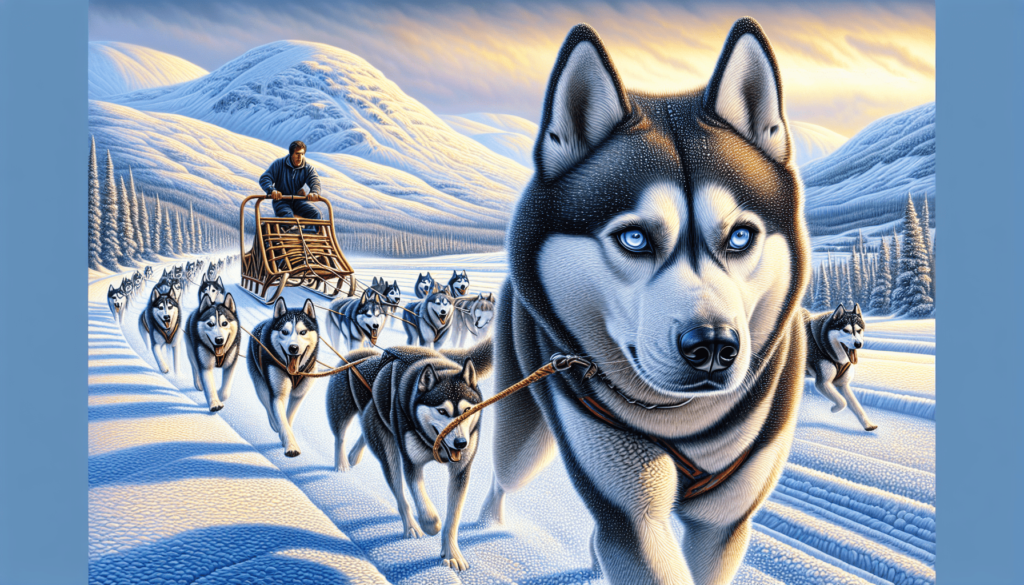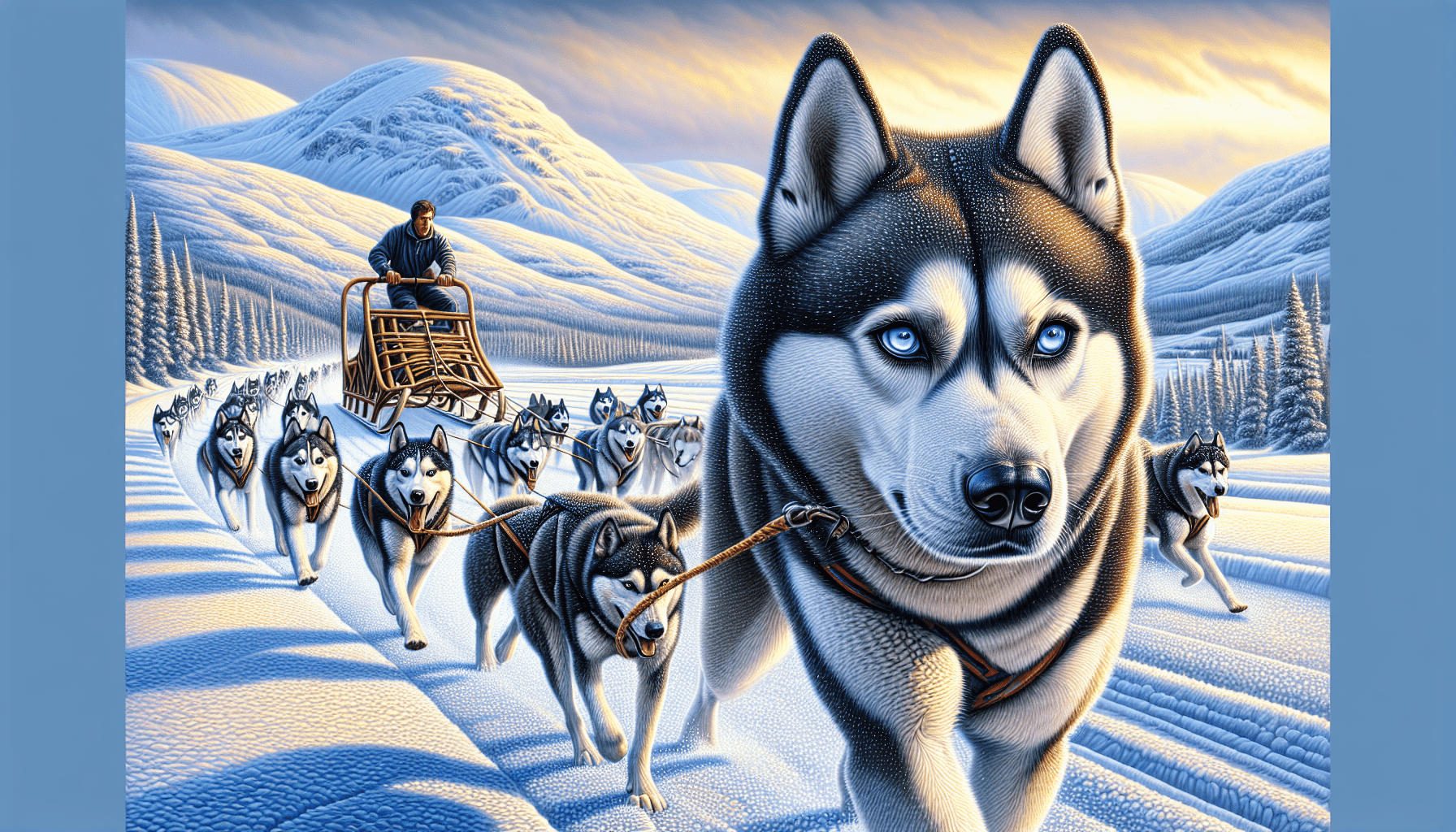Imagine being whisked away on a thrilling adventure through snowy landscapes, guided by a team of loyal and energetic canines. In “The World of Sled Dogs: History and Training,” we explore the fascinating history behind these incredible animals and delve into the training methods that help turn them into the unstoppable forces they are today. Discover the remarkable bond between mushers and their sled dogs and gain a glimpse into the extraordinary world of these magnificent creatures. Get ready to embark on a journey that will leave you in awe of the strength, resilience, and intelligence of sled dogs.

History of Sled Dogs
Sled dogs have a long and rich history that spans thousands of years. These incredible animals have played a vital role in the lives of many cultures, particularly those living in Arctic and Subarctic regions. From transportation and communication to hunting and fishing assistance, sled dogs have been integral to the survival and development of these communities. Today, famous breeds such as the Siberian Husky, Alaskan Malamute, and Samoyed continue to capture our hearts and serve as reminders of the incredible bond between humans and dogs.
Origins of Sled Dogs
Domestication of Canines
The origins of sled dogs can be traced back to the domestication of canines, which is believed to have occurred tens of thousands of years ago. Early humans relied on these intelligent and loyal animals for various tasks, including hunting, herding, and companionship. Over time, certain groups began to harness the strength and endurance of these dogs to pull sleds and assist with transportation in freezing climates.
Ancient Sled Dogs
Evidence suggests that sled dogs were present in ancient civilizations, including those of the Greeks, Romans, and Egyptians. These dogs were often used to transport goods, military personnel, and even the sick and injured. The ancient sled dogs were typically larger and more powerful breeds, with a focus on strength and stamina to navigate challenging terrains.
Connection to Indigenous Peoples
Sled dogs have always shared a deep connection with indigenous peoples around the world. In regions such as the Arctic and Subarctic, where the climate is harsh and resources are scarce, sled dogs played a vital role in daily life. Indigenous cultures relied on these dogs for transportation, hunting, and carrying loads over long distances. Sled dogs were not solely viewed as working animals but were also considered valuable members of the community, often providing companionship and a source of warmth in times of cold and isolation.
Early use of Sled Dogs
Transportation and Communication
One of the earliest and most significant uses of sled dogs was for transportation and communication. In vast, snowy terrains where traditional methods of travel were impractical, sled dogs provided an efficient means of getting from one place to another. These dogs were harnessed to sleds or sled-like contraptions, allowing people to traverse long distances quickly and safely. Additionally, sled dogs played a crucial role in communication, carrying messages and mail between remote communities.
Hunting and Fishing Assistance
Sled dogs were invaluable in assisting with hunting and fishing activities. Their incredible sense of smell and agility made them adept at tracking game and navigating treacherous terrains. In some cases, sled dogs were trained to retrieve prey and even help in pulling in large catches from freezing waters. The bond between sled dogs and their human counterparts during these activities was strong, as they relied on each other for survival in the harsh Arctic environment.
Cultural and Spiritual Significance
For indigenous cultures, sled dogs held immense cultural and spiritual significance. These dogs were often seen as guardians, protectors, and guides in both the physical and spiritual realms. Ceremonial rituals and traditions were built around the relationship between humans and sled dogs, honoring their role in the community. Sled dogs were believed to have a deep understanding of the land and the spirits that inhabited it, making them respected and revered members of these societies.
Significance in Arctic and Subarctic regions
Harsh Environments and Challenges
The Arctic and Subarctic regions are characterized by extreme weather conditions, including freezing temperatures, snowstorms, and treacherous landscapes. In such harsh environments, sled dogs have been instrumental in overcoming these challenges. Their thick fur, muscular build, and keen senses make them well-adapted to the cold climate, allowing them to navigate snowy terrains and endure long distances without succumbing to the elements.
Sustenance and Survival
In these remote regions, where resources are limited, sled dogs were essential for the sustenance and survival of communities. These dogs could be relied upon to transport food, water, and firewood over vast distances. Their strength and endurance were crucial in ensuring that the community had access to vital resources, even during the harshest winter months. Sled dogs were often fed the same diets as humans, further highlighting their integral role in the daily lives of these communities.
Cultural and Historical Importance
The significance of sled dogs in Arctic and Subarctic regions extends beyond their practical uses. These dogs are deeply rooted in the cultural and historical fabric of these communities. They have been celebrated in art, storytelling, and traditional practices for centuries. Today, sled dog races and festivals serve as reminders of their historical contributions and provide opportunities for communities to come together and celebrate their shared heritage.

Famous Sled Dog Breeds
Siberian Husky
The Siberian Husky is perhaps the most iconic and recognizable sled dog breed. Renowned for their striking appearance and friendly disposition, Siberian Huskies have been a favorite among mushers and dog enthusiasts alike. Their ability to withstand extreme temperatures, combined with their endurance and speed, makes them exceptional sled dogs. Siberian Huskies have also gained popularity as beloved family pets due to their gentle nature and playful personalities.
Alaskan Malamute
The Alaskan Malamute is another well-known sled dog breed that originated in the Arctic regions. This powerful and athletic breed is built for pulling heavy loads over long distances. With their large frames, thick double coats, and strong work ethic, Alaskan Malamutes are revered for their strength and perseverance. These dogs have a strong sense of loyalty and are known for their gentle and affectionate nature, making them suitable companions and working dogs.
Samoyed
The Samoyed breed has a long history of pulling sleds in Arctic and Subarctic regions. These dogs have a friendly and sociable nature, making them excellent working dogs as well as beloved family pets. Samoyeds are known for their beautiful white coats, which provide insulation and protection in extreme cold weather. They are highly adaptable and excel in various roles, including sledding, herding, and even search and rescue.
Greenland Dog
Originating from Greenland, the Greenland Dog is a rugged and hardworking breed specifically bred for sled pulling in Arctic conditions. These dogs are known for their endurance and strength, enabling them to travel long distances without tiring. Greenland Dogs have a dense double coat that keeps them warm in freezing temperatures, and their keen sense of smell and instincts make them excellent hunters and sled dogs.
Canadian Inuit Dog
The Canadian Inuit Dog, also known as the Canadian Eskimo Dog, has been an integral part of Inuit culture for centuries. This breed is known for its resilience, adaptability, and ability to withstand extreme cold. Canadian Inuit Dogs are highly skilled sled dogs, capable of pulling heavy loads through deep snow and icy terrains. They have a strong work ethic and an innate desire to please, making them essential partners for survival in Arctic regions.
Training Sled Dogs
Selecting Suitable Breeds
Selecting the right breed is a crucial first step in training sled dogs. While almost any dog can be taught to pull a sled, certain breeds are better suited for this purpose due to their physical attributes, temperament, and endurance. Popular sled dog breeds such as the Siberian Husky, Alaskan Malamute, Samoyed, Greenland Dog, and Canadian Inuit Dog are often chosen for their natural inclination and abilities to excel in sled dog sports.
Socialization and Obedience Training
Socialization and obedience training are imperative for sled dogs to become well-rounded and disciplined athletes. Early puppy socialization helps familiarize them with various environments, people, and other animals. This exposure ensures that they grow up to be confident and adaptable dogs. Obedience training, consisting of basic commands and leash manners, establishes the framework for effective communication between musher and dog, promoting safety and cooperation during training and races.
Physical Conditioning and Exercise
To become successful sled dogs, proper physical conditioning and exercise are essential. Building strength and endurance through regular exercise regimens is a critical component of training. Sled dogs should engage in activities such as long-distance running, hiking, and swimming to develop the necessary muscles and stamina required for sled pulling. Conditioning programs may also incorporate activities to promote balance, flexibility, and cardiovascular fitness.
Introduction to Pulling Techniques
Introducing sled dogs to pulling techniques is a gradual process that starts with familiarizing them with the harness and gradually increasing their workload. Harness training begins with acclimatizing the dog to the sensation of wearing a harness and understanding the connection between the harness and pulling. Teaching commands and signals, such as “gee” (turn right) and “haw” (turn left), enables mushers to communicate effectively with their teams during training and races. Teamwork and coordination between musher and dogs are fostered through consistent practice and reinforcement.
Conclusion
The history of sled dogs is a testament to the incredible bond between humans and animals. These remarkable animals have played an indispensable role in the lives of indigenous peoples, helping them navigate the harsh Arctic and Subarctic environments. From transportation and communication to hunting and fishing assistance, sled dogs have contributed to the survival and well-being of communities for centuries. Today, the legacy of sled dogs lives on through famous breeds such as the Siberian Husky, Alaskan Malamute, Samoyed, Greenland Dog, and Canadian Inuit Dog. Their endurance, strength, and loyalty continue to captivate our hearts and serve as a reminder of the resilience and spirit of these incredible canine companions.

